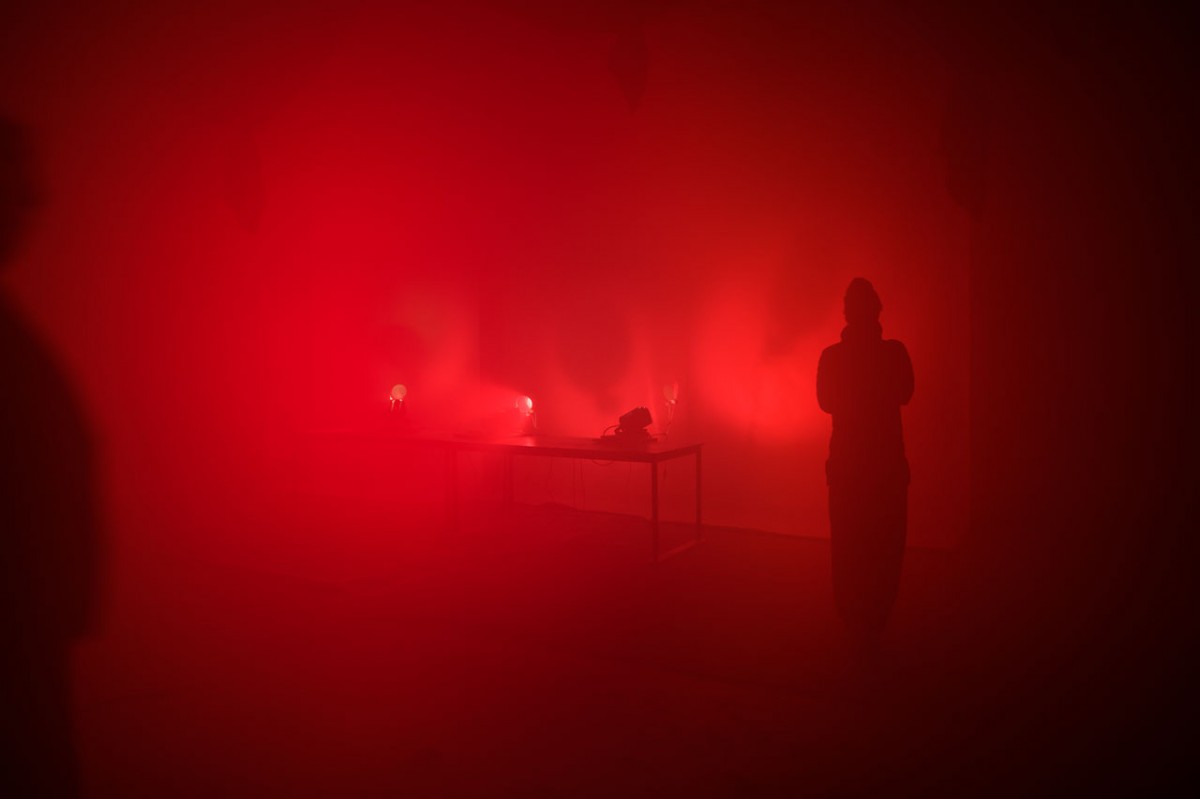Tuesday 27 February 12:27

Sensing the Place. Photo by Pieter Kers
by Dulce da Rocha Gonçalves
“Water, ropes, metals and mosses for us result in fragrance and colors, vibrations and stories. When, as in this project, art becomes affect rather than representation, when movement and sensation rather than symbols or metaphors guide your artistic process, artistic knowledge is omnipresent.”
- Renske Maria van Dam
Sensing the Place is described as a sensorial walk and experimental tour. Created by the student-researchers from the ArtScience Interfaculty at the Royal Academy of Art in The Hague, under the guidance of different artists and researchers such as Renske Maria van Dam and BJ Nilsen, it transformed Motorkade 9, in Amsterdam Noord, into a sensorial reconstruction of traces of the Damen Shiprepair, less than four kilometers away.
Step 1: Excavating
The process began with a sensory examination of Damen Shiprepair. The students collected their experiences in the form of sounds, vibrations, smells and perceptions from organic and mechanical sources inhabiting the shipyard. the students focused on elements such as infrastructure, body movements or the extraction of small details in a place otherwise marked by a larger-than-human scale. This extraction was an excavation of both the material and the immaterial components of the place. The researcher excavates for sensory evidence in order to dissect the experience of the particular space of this shipyard.
Step 2: Thinking
Rhythms, flows and noises were then transformed into maps: sensory visualizations of the shipyard. Their cartography focused on potential rather than constant properties, building ‘intensive’ maps. For example, an ‘extensive’ map of Amsterdam would show the position of roads and buildings, while an ‘intensive’ map could show languages heard in certain areas of the city or the pattern of water ripples in the canals. The intensive maps of the shipyard show a visual organization of perceptions such as movement tracking or object deconstruction. This is an exercise of visual thinking, of analytically thinking the components of the shipyard.
Step 3: Building
We are in Amsterdam Noord, a 40-minute walk away from Damen Shiprepair. In Motorkade 9, the installation of a new site emerges: an attempt to construct the
presence of the shipyard. This presence is built from sensory traces devoid of explanation or theoretical justification. It is not a metaphor for the shipyard, but rather a metonymy. A metaphor tries to explain an object by connecting it to a different one – by doing so, it substitutes an object for an idea. A metonymy uses a part of the object to refer to the same object. By staying attached to the original object that it refers to, it brings the presence of the absent object to the foreground. Saying “the canals of Amsterdam are like old highways” is a metaphor. It explains the canal construction connected to another object, whereas the OV-chipkaart would be a metonymy of the experience of Amsterdam (or of The Netherlands, for that matter). The object, the 0V-chipkaart, brings the experience back, but without adding a new idea – and it explains nothing. The installation, as a metonymy, speaks directly to
feeling something, instead of
understanding something.